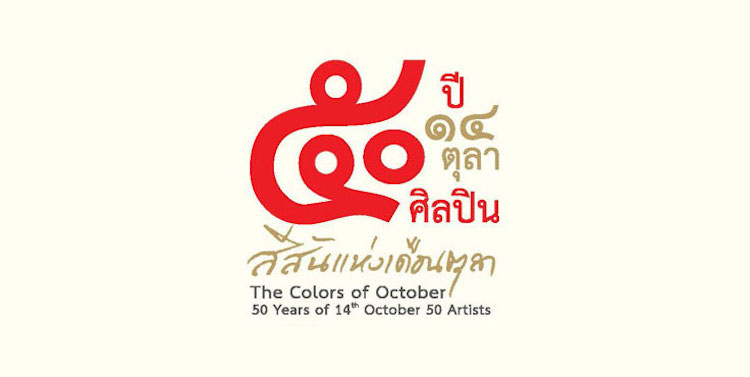
The Colors of October: 50 Years of 14th October, 50 Artists (สีสันแห่งเดือนตุลา ห้าสิบปีสิบสี่ตุลา ห้าสิบศิลปิน) opens at g23 in Bangkok on 29th July. The exhibition marks the fiftieth anniversary of the 14th October 1973 protest and massacre, with works by fifty contemporary artists, and runs until 30th August. Surprisingly, the participating artists (with only one exception, Chokchai Tukpoe) do not depict the events of the protest itself, nor do they refer — even symbolically — to the violence of the event. Instead, there are numerous paintings of bucolic landscapes, plants, and clouds.
In October 1973, a group of students campaigned against military corruption after a decade of dictatorial rule by Thanom Kittikachorn. A dozen campaigners were arrested, prompting a rally at Democracy Monument by 2,000 Thammasat University students calling for their release. Within a week, the number had swelled to 500,000 people, the largest mass protest in Thai history. King Rama IX indicated his support for the movement, and assured protest leader Seksan Prasertkul that their demands would be met. The protest was successful, as Thanom was dismissed as prime minister and sent into exile, though the military shot and killed seventy-seven protesters.
In October 1973, a group of students campaigned against military corruption after a decade of dictatorial rule by Thanom Kittikachorn. A dozen campaigners were arrested, prompting a rally at Democracy Monument by 2,000 Thammasat University students calling for their release. Within a week, the number had swelled to 500,000 people, the largest mass protest in Thai history. King Rama IX indicated his support for the movement, and assured protest leader Seksan Prasertkul that their demands would be met. The protest was successful, as Thanom was dismissed as prime minister and sent into exile, though the military shot and killed seventy-seven protesters.

The last exhibition commemorating the massacre, 14 ตุลา ผ่านสายตาศิลปิน (‘14th October through artists’ eyes’), was held on the thirtieth anniversary of the event. That exhibition featured only seven artists, though several of the works on show were produced in the immediate aftermath of the massacre and commented directly on the tragedy that unfolded. These included Tang Chang’s haunting self-portrait of the artist’s bloodstained face and chest; and Pratuang Emjaroen’s Dhama and Adhama (ธรรมะ-อธรรม), which depicts bullet holes on the face of the Buddha. The ประชาธิปไตยในหัวใจของปวงชน (‘democracy in the hearts of the people’) exhibition also marked the thirtieth anniversary of the event.

